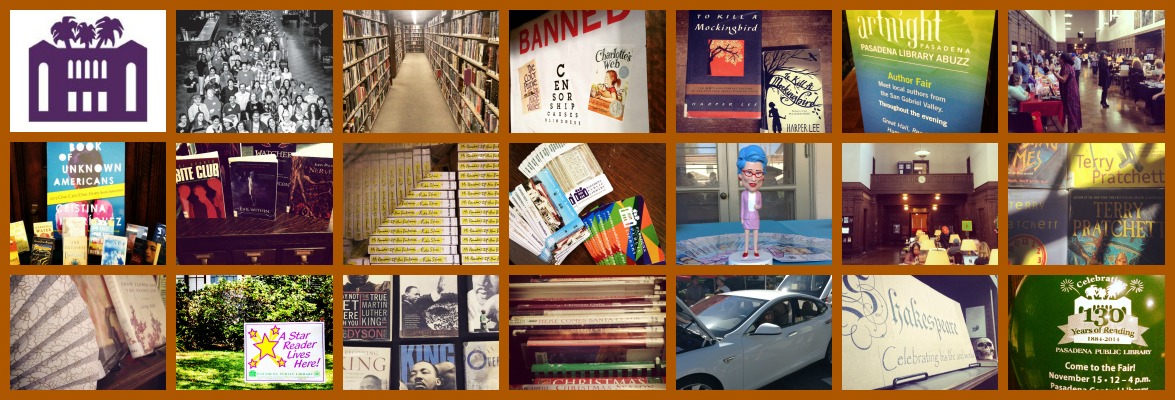
 Ragtime by E. L. Doctorow, 1975
Ragtime by E. L. Doctorow, 1975
Set in New York City at the turn of the century, Ragtime focuses on a representative cross-section of America in the era prior to World War I. It relates the story of Coalhouse Walker, Jr., a poor black man who is determined to rise above his station in life. Intermingled with Walker’s experiences are the lives of Jateh and Mameh, a Jewish family, and the prosperous Father, Mother, and Younger Brother, the family of the narrator. Doctorow also chronicles the lives of such famous historical figures of the era as Henry Ford, Emma Goldman, J. P. Morgan, and Sigmund Freud. The novel’s conflict occurs when Coalhouse is racially harassed, and his car is vandalized by local firemen. Walker goes into hiding and threatens to destroy every firehouse until his car is returned to its previous condition. While he is in seclusion, his wife, Sarah, dies. He and Younger Brother, who embraces Walker’s cause of racial justice, take over the J. P. Morgan Library, a symbol of the evils and excesses of capitalism. In the conclusion, Younger Brother escapes to Mexico, and Walker is killed by a firing line of policemen.
Doctorow’s portrait of an era portrays characters who are victims of historical, social, and economic forces over which they have no control. His narrative style evokes the rhythms of ragtime music in a closely detailed series of vignettes. The novel has come under criticism for Doctorow’s blending of fact and fiction, particularly in his portrayals of historical figures, but Ragtime remains his best-known and most popular work.
Read Along: The Great Mrs. Elias by Barbara Chase-Riboud
A murder and a case of mistaken identity brings the police to Hannah Elias’ glitzy, five-story, twenty-room mansion on Central Park West. This is the beginning of an odyssey that moves back and forth in time and reveals the dangerous secrets of a mysterious woman, the fortune she built, and her precipitous fall. Born in Philadelphia in the late 1800s, Hannah Elias has done things she’s not proud of to survive. Shedding her past, Hannah slips on a new identity before relocating to New York City to become as rich as a robber baron. Hannah quietly invests in the stock market, growing her fortune with the help of businessmen. As the money pours in, Hannah hides her millions across 29 banks. Finally attaining the life she’s always dreamed, she buys a mansion on the Upper West Side and decorates it in gold and first-rate décor, inspired by her idol Cleopatra. The unsolved murder turns Hannah’s world upside-down and threatens to destroy everything she’s built. When the truth of her identity is uncovered, thousands of protestors gather in front of her stately home. Hounded by the salacious press, the very private Mrs. Elias finds herself alone, ensnared in a scandalous trial, and accused of stealing her fortune from whites. Packed with glamour, suspense, and drama, populated with real-life luminaries from the period, The Great Mrs. Elias brings a fascinating woman and the age she embodied to glorious, tragic life.
 Roots: The Saga of an American Family by Alex Haley, 1976
Roots: The Saga of an American Family by Alex Haley, 1976
Roots: The Saga of an American Family became a sensation immediately after its publication in 1976. It was adapted into a popular miniseries and became one of the most-watched television programs in American history. Two sequels, The Next Generation and The Gift, quickly followed. Roots appealed to readers of every background: for African American readers, the story inspired pride and a greater understanding of the past; and for readers of other ethnicities, it was a powerful look at an American family’s immigrant past. Moreover, Haley’s work is widely credited with starting the American genealogy craze…Roots is viewed as a mythic saga of African American history, portraying the ways in which enslaved Africans endured suffering and fought for their place in American society. It has earned a place among the popular classics of American literature and remains a profoundly influential and well-loved book.
Read Along: Homegoing by Yaa Gyasi
Two half sisters, Effia and Esi, unknown to each other, are born into two different tribal villages in 18th century Ghana. Effia will be married off to an English colonial, and will live in comfort in the sprawling, palatial rooms of Cape Coast Castle, raising half-caste children who will be sent abroad to be educated in England before returning to the Gold Coast to serve as administrators of the Empire. Her sister, Esi, will be imprisoned beneath Effia in the Castle’s women’s dungeon, and then shipped off on a boat bound for America, where she will be sold into slavery.
 The Shining by Stephen King, 1977
The Shining by Stephen King, 1977
The Shining reimagines the haunted castle of gothic fiction as a twentieth-century hotel in the grips of evil forces. Unwinding over the course of a snowy winter, the narrative depicts the psychological disintegration of caretaker Jack Torrance, an alcoholic writer with a history of violence, as he falls prey to both his own demons and to the whisperings of the Overlook Hotel’s malignant ghosts. The novel’s use of multiple narrators incorporates the insights of Jack’s five-year-old son, Danny, a sensitive boy who has “the shining”—the supernatural ability to read minds, see the past, and foretell the future. This ability allows Danny to sense and resist the hotel’s violent intentions toward his family. King’s novel is both a story of supernatural possession and a meditation on the ways in which violence persists in families and institutions.
Read Along: The Starter House by Sonja Condit (2014)
A pregnant woman who moves into her dream home discovers she must solve the mystery of a decades-old murder to rid herself of a ghostly little boy and save her unborn child.
 Kindred by Octavia E. Butler, 1978 (2006 One City, One Story Selection)
Kindred by Octavia E. Butler, 1978 (2006 One City, One Story Selection)
The novel focuses on many of the issues found in Butler’s fiction: the abuse of power, the limits of traditional gender roles, and the repercussions of racial conflict. The science-fiction elements of the story are limited, however, to the unexplained mechanism that permits a twentieth-century African American woman to travel into the past. Each time Dana Franklin is drawn back into the early 1800s to save the life of her white ancestor, she learns more about the complex nature of slavery and the struggles of African Americans to survive it. The result is a powerful and accessible story that resembles a historical slave narrative–but one told from a modern perspective and in a modern voice. Butler’s exploration of this era has led many new readers to discover her work, from feminist critics to students of African American literature. These individuals have learned what fans of science fiction have long known: Butler crafts some of the most imaginative and thought-provoking fiction today. “In Kindred,” Robert Crossley wrote in his introduction to the novel, “Octavia Butler has designed her own underground railroad between past and present whose terminus is the reawakened imagination of the reader.”
Read Along: Shallow Waters by Anita Kopacz (2021)
Cast into mid-1800s America, Yemaya, a deity in the religion of Africa’s Yoruba people, as she grows into her powers, must confront the greatest evils of this era while searching for the man who sacrificed his own freedom for the chance at hers.
 Sophie’s Choice by William Styron, 1979
Sophie’s Choice by William Styron, 1979
Sophie’s Choice consists of a story within a story. The first story is of the summer of 1947 when the narrator, then age twenty-two and using the nickname Stingo, loses his job at McGraw-Hill in New York City. He moves to a Brooklyn boarding house where he sets about writing what he hopes will be the next great American novel. While Stingo tries to write this book, using the recent suicide of a childhood friend as a catalyst, he becomes involved with two other residents, the co-dependent Sophie and the psychotic drug addict Nathan. The second story emerges piecemeal from Sophie, who tells Stingo about her life over the past decade: of living in Cracow, Poland, the daughter of a university professor; of her marriage to her father’s protégé; of living with her two children in Warsaw after her father and husband are murdered; and of her imprisonment at Auschwitz. Because she survived, Sophie feels implicated in Nazi atrocities. She is ashamed of her father’s fascist beliefs and guilt-ridden for having helped with his pamphlet advocating the extermination of the Jews, for failing to protect her children, and for using her father’s views as an argument to wangle her freedom from the camp. Her abusive relationship with Nathan exacerbates these feelings. Alcohol abuse by all three characters makes matters worse.
The nature of evil and the widening circle of implicating others in its perpetuation constitutes the central subject in this novel. In addition to that subject, however, the novel takes itself as its subject. In a surprisingly self-referential and reflexive way, the novel is about writing a novel. It describes Stingo’s uncertainty and writer’s block; it includes drafts from 1947 and criticizes them from the narrator’s 1977 perspective.
Read Along: We Must Not Think of Ourselves by Lauren Grodstein (2023)
Adam, a prisoner in the Warsaw Ghetto, is approached by a mysterious figure with a surprising request: Will he join a secret group of archivists working to preserve the truth of what is happening inside these walls? Adam agrees and begins taking testimonies from his students, friends, and neighbors. One of the people he interviews is his flatmate Sala, who is stoic, determined, and funny–and married with two children. Over the months of their confinement, in the presence of her family, Adam and Sala fall in love. As they desperately carve out intimacy, their relationship feels both impossible and vital, their connection keeping them alive. But when Adam discovers a possible escape from the Ghetto, he is faced with an unbearable choice: Whom can he save, and at what cost?
 Red Dragon by Thomas Harris, 1981
Red Dragon by Thomas Harris, 1981
Harris’s obvious interest in exploring psychological depths is given full fictional rein in his second novel, Red Dragon. Trading terrorism for spine-tingling horror, Harris presents the nightmarish exploits of Francis Dolarhyde, a serial killer convinced that the massacre of whole families will aid his transformation into the godlike Red Dragon of the Apocalypse. Intent on catching him before he can repeat his gruesome monthly ritual is Will Graham, an FBI agent with a special aptitude in the area of imaginative projection. This ability enabled him to capture Doctor Hannibal Lecter, a psychiatrist who killed and ate his patients. And it is the psychopathic Lecter to whom Will applies for help in solving the case, a visit that also allows him to regain the mindset required to track the killer. Meticulous in its forensic accuracy and terrifying in its detailed unfolding of the origins of Dolarhyde’s obsession, Red Dragon is more disturbing in its emphasis on duality and the fine line between sanity and insanity. Harris gives the traditional detective-versus-criminal relationship a subtle edge by establishing an unnerving identification between investigator and psychopathic serial killer. Projecting himself into the mind of a madman, Graham is forced to acknowledge his own heart of darkness. Thus, Lecter’s words echo throughout Graham’s investigation of Red Dragon, Lecter’s symbolic protégé: “The reason you caught me is that we’re just alike.”
Read Along: Unsub by Meg Gardiner (2017)
A riveting psychological thriller inspired by the never-caught Zodiac Killer, about a young detective determined to apprehend the serial murderer who destroyed her family and terrorized a city twenty years earlier. Caitlin Hendrix has been a Narcotics detective for six months when the killer at the heart of all her childhood nightmares reemerges: the Prophet. An UNSUB–what the FBI calls an unknown subject–the Prophet terrorized the Bay Area in the 1990s and nearly destroyed her father, the lead investigator on the case. The Prophet’s cryptic messages and mind games drove Detective Mack Hendrix to the brink of madness, and Mack’s failure to solve the series of ritualized murders–eleven seemingly unconnected victims left with the ancient sign for Mercury etched into their flesh–was the final nail in the coffin for a once promising career. Twenty years later, two bodies are found bearing the haunting signature of the Prophet. Caitlin Hendrix has never escaped the shadow of her father’s failure to protect their city. But now the ruthless madman is killing again and has set his sights on her, threatening to undermine the fragile barrier she rigidly maintains for her own protection, between relentless pursuit and dangerous obsession.
 The Color Purple by Alice Walker, 1982
The Color Purple by Alice Walker, 1982
Alice Walker’s 1982 novel The Color Purple was awarded the Pulitzer Prize for Fiction and the National Book Award, gaining Walker lasting international notoriety. The novel is among the most highly regarded works of American literature, combining the struggles of one woman to overcome a lifetime of abuse with global topics ranging across women’s rights, race relations, gender identity, domestic violence, and poverty. Through letters first written to God and then to her long-lost sister, Nettie, Celie, an uneducated black woman living in rural Georgia, learns to love herself after enduring repeated rapes, beatings, and insults meant to keep her under the thumb of the men in her life. With the aid of the traveling blues singer Shug Avery, Celie throws off the yoke of her husband and becomes her own woman. As a testament to the novel’s inspirational power, it has been translated into more than twenty-five languages, has sold over five million copies, and was adapted into an Academy Award-winning film as well as a Tony Award-winning musical and a new musical film adaptation (2023).
Read Along: Silver Sparrow by Tayari Jones (2011)
With the opening line of Silver Sparrow, “My father, James Witherspoon, is a bigamist,” author Tayari Jones unveils a breathtaking story about a man’s deception, a family’s complicity, and the two teenage girls caught in the middle. Set in a middle-class neighborhood in Atlanta in the 1980s, the novel revolves around James Witherspoon’s two families–the public one and the secret one. When the daughters from each family meet and form a friendship, only one of them knows they are sisters. It is a relationship destined to explode. This is the third stunning novel from an author deemed “one of the most important writers of her generation
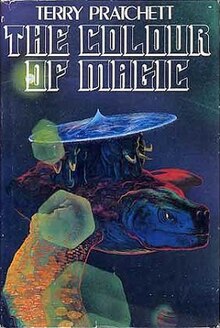 The Color of Magic (Discworld Series) by Terry Pratchett, 1983
The Color of Magic (Discworld Series) by Terry Pratchett, 1983
In this first novel in the internationally bestselling Discworld series from legendary New York Times bestselling author Sir Terry Pratchett (and the first in the Wizards collection), the fate of the Discworld depends on the survival of a naïve–and first-ever–sightseer. A writer of brilliant imagination favorably compared to Mark Twain, Kurt Vonnegut, and Douglas Adams, Sir Terry Pratchett created a complex, satirical universe with its own set of cultures and rules, populated with wizards, witches, academics, fairies, policemen, and other creatures both fantastical and remarkably ordinary (including Death himself). Welcome to the Discworld . . . a parallel time and place that sounds very much like our own, but looks completely different–because it’s a flat world sitting on the backs of four elephants who hurtle through space balanced on a giant turtle.
In this, the maiden voyage through Terry Pratchett’s ingeniously twisted alternate dimension, the well-meaning but spectacularly inept wizard Rincewind encounters something previously unknown in the Discworld: a tourist! Twoflower has arrived to take in the sights. Unfortunately, he’s cast his lot with a most inappropriate tour guide–a decision that could result in his becoming not only Discworld’s first visitor . . . but quite possibly, its last. And, of course, he’s brought Luggage along, a companion with feet–and a mind–of its own. And teeth. . . .
Read Along: The Eyre Affair (Thursday Next Series) by Jasper Fforde (2002)
Great Britain circa 1985: time travel is routine, cloning is a reality (dodos are the resurrected pet of choice), and literature is taken very, very seriously. Baconians are trying to convince the world that Francis Bacon really wrote Shakespeare, there are riots between the Surrealists and Impressionists, and thousands of men are named John Milton, an homage to the real Milton and a very confusing situation for the police. Amidst all this, Acheron Hades, Third Most Wanted Man In the World, steals the original manuscript of Martin Chuzzlewit and kills a minor character, who then disappears from every volume of the novel ever printed! But that’s just a prelude . . . Hades’ real target is the beloved Jane Eyre, and it’s not long before he plucks her from the pages of Bronte’s novel. Enter Thursday Next. She’s the Special Operative’s renowned literary detective, and she drives a Porsche. With the help of her uncle Mycroft’s Prose Portal, Thursday enters the novel to rescue Jane Eyre from this heinous act of literary homicide. It’s tricky business, all these interlopers running about Thornfield, and deceptions run rampant as their paths cross with Jane, Rochester, and Miss Fairfax. Can Thursday save Jane Eyre and Bronte’s masterpiece? And what of the Crimean War? Will it ever end? And what about those annoying black holes that pop up now and again, sucking things into time-space voids . . . Suspenseful and outlandish, absorbing and fun, The Eyre Affairis a caper unlike any other and an introduction to the imagination of a most distinctive writer and his singular fictional universe.
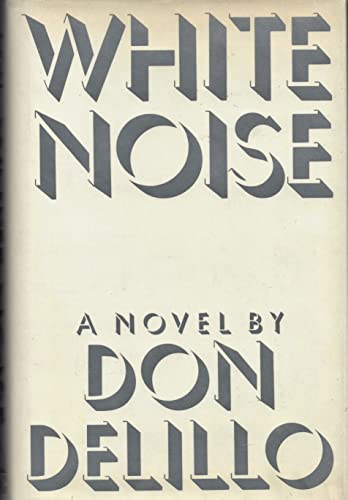 White Noise by Don DeLillo, 1984
White Noise by Don DeLillo, 1984
Our lives, our half century. Nick Shay and Klara Sax knew each other once, intimately, and they meet again in the American desert. He is trying to outdistance the crucial events of his early life, haunted by the hard logic of loss and by the echo of a gunshot in a basement room. She is an artist who has made a blood struggle for independence. Don DeLillo’s mesmerizing novel opens with a legendary baseball game played in New York in 1951. The glorious outcome — the home run that wins the game is called the Shot Heard Round the World — shades into the grim news that the Soviet Union has just tested an atomic bomb. The baseball itself, fought over and scuffed, generates the narrative that follows. It takes the reader deeply into the lives of Nick and Klara and into modern memory and the soul of American culture — from Bronx tenements to grand ballrooms to a B-52 bombing raid over Vietnam. A generation’s master spirits come and go. Lennny Bruce cracking desperate jokes, Mick Jagger with his devil strut, J. Edgar Hoover in a sexy leather mask. And flashing in the margins of ordinary life are the curiously connectecd materials of the culture. Condoms, bombs, Chevy Bel Airs and miracle sites on the Web. Underworld is a story of men and women together and apart, seen in deep clear detail and in stadium-sized panoramas, shadowed throughout by the overarching conflict of the Cold War. It is a novel that accepts every challenge of these extraordinary times — Don DeLillo’s greatest and most powerful work of fiction.
Read Along: You Too Can Have a Body Like Mine by Alexandra Kleeman (2015)
An intelligent and madly entertaining debut novel…that is at once a missing-person mystery, an exorcism of modern culture, and a wholly singular vision of contemporary womanhood from a terrifying and often funny voice of a new generation. A woman known only by the letter A lives in an unnamed American city with her roommate, B, and boyfriend, C, who wants her to join him on a reality show called That’s My Partner! A eats (or doesn’t) the right things, watches endless amounts of television, often just for the commercials–particularly the recurring cartoon escapades of Kandy Kat, the mascot for an entirely chemical dessert–and models herself on a standard of beauty that only exists in such advertising. She fixates on the fifteen minutes of fame a news-celebrity named Michael has earned after buying up his local Wally Supermarket’s entire, and increasingly ample, supply of veal. Meanwhile B is attempting to make herself a twin of A, who hungers for something to give meaning to her life, something aside from C’s pornography addiction, and becomes indoctrinated by a new religion spread throughout a web of corporate franchises, which moves her closer to the decoys that populate her television world, but no closer to her true nature.
 The Handmaid’s Tale by Margaret Atwood, 1985
The Handmaid’s Tale by Margaret Atwood, 1985
In Margaret Atwood’s dystopian future, environmental disasters and declining birthrates have led to a Second American Civil War. The result is the rise of the Republic of Gilead, a totalitarian regime that enforces rigid social roles and enslaves the few remaining fertile women. Offred is one of these, a Handmaid bound to produce children for one of Gilead’s commanders. Deprived of her husband, her child, her freedom, and even her own name, Offred clings to her memories and her will to survive. At once a scathing satire, an ominous warning, and a tour de force of narrative suspense, The Handmaid’s Tale is a modern classic.
Read Along: Vox by Christina Dalcher (2018)
On the day the government decrees that women are no longer allowed more than one hundred words per day, Dr. Jean McClellan is in denial. This can’t happen here. Not in America. Not to her. This is just the beginning. Soon women are not permitted to hold jobs. Girls are not taught to read or write. Females no longer have a voice. Before, the average person spoke sixteen thousand words each day, but now women have only one hundred to make themselves heard. For herself, her daughter, and every woman silenced, Jean will reclaim her voice.
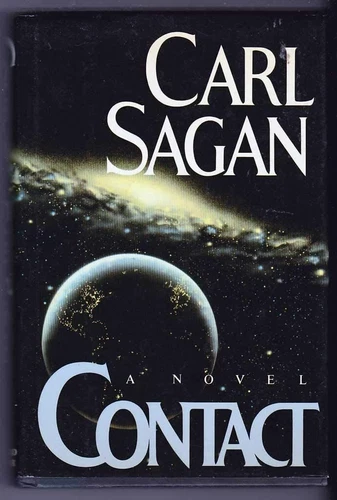 Contact by Carl Sagan, 1986
Contact by Carl Sagan, 1986
The Pulitzer Prize-winning author of Cosmos and renowned astronomer Carl Sagan’s international bestseller about the discovery of an advanced civilization in the depths of space remains the “greatest adventure of all time” (Associated Press).
The future is here…in an adventure of cosmic dimension. When a signal is discovered that seems to come from far beyond our solar system, a multinational team of scientists decides to find the source. What follows is an eye-opening journey out to the stars to the most awesome encounter in human history. Who—or what—is out there? Why are they watching us? And what do they want with us?
One of the best science fiction novels about communication with extraterrestrial intelligent beings, Contact is a “stunning and satisfying” (Los Angeles Times) classic.
Read Along: The Three-Body Problem by Cixin Liu (2014)
Set against the backdrop of China’s Cultural Revolution, a secret military project sends signals into space to establish contact with aliens. An alien civilization on the brink of destruction captures the signal and plans to invade Earth. Meanwhile, on Earth, different camps start forming, planning to either welcome the superior beings and help them take over a world seen as corrupt, or to fight against the invasion.
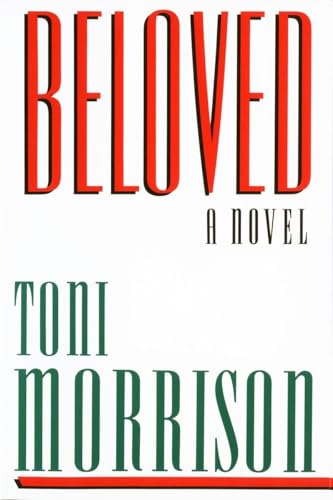 Beloved by Toni Morrison, 1987
Beloved by Toni Morrison, 1987
Staring unflinchingly into the abyss of slavery, this spellbinding novel transforms history into a story as powerful as Exodus and as intimate as a lullaby. Sethe, its protagonist, was born a slave and escaped to Ohio, but eighteen years later she is still not free. She has too many memories of Sweet Home, the beautiful farm where so many hideous things happened. And Sethe’s new home is haunted by the ghost of her baby, who died nameless and whose tombstone is engraved with a single word: Beloved. After the Civil War ends, Sethe longingly recalls the two-year-old daughter whom she killed when threatened with recapture after escaping from slavery 18 years before. Filled with bitter poetry and suspense as taut as a rope, Beloved is a towering achievement.
Read Along: Sing, Unburied, Sing by Jesmyn Ward (2017)
Jojo and his toddler sister, Kayla, live with their grandparents, Mam and Pop, and the occasional presence of their drug-addicted mother, Leonie, on a farm on the Gulf Coast of Mississippi. Leonie is simultaneously tormented and comforted by visions of her dead brother, which only come to her when she’s high; Mam is dying of cancer; and quiet, steady Pop tries to run the household and teach Jojo how to be a man. When the white father of Leonie’s children is released from prison, she packs her kids and a friend into her car and sets out across the state for Parchman farm, the Mississippi State Penitentiary, on a journey rife with danger and promise.
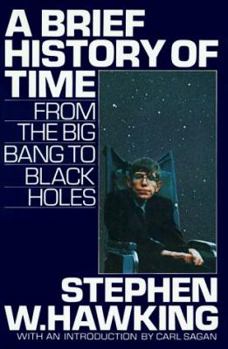 A Brief History of Time by Stephen Hawking, 1988
A Brief History of Time by Stephen Hawking, 1988
A Brief History of Time, published in 1988, was a landmark volume in science writing and in world-wide acclaim and popularity, with more than 9 million copies in print globally. The original edition was on the cutting edge of what was then known about the origins and nature of the universe. But the ensuing years have seen extraordinary advances in the technology of observing both the micro- and the macrocosmic world–observations that have confirmed many of Hawking’s theoretical predictions in the first edition of his book. A decade later, a new edition updated the chapters throughout to document those advances, and also included an entirely new chapter on Wormholes and Time Travel and a new introduction. A Brief History of Time transformed our view of the universe.
Read Along: Astrophysics for People in a Hurry by Neil deGrasse Tyson (2017)
What is the nature of space and time? How do we fit within the universe? How does the universe fit within us? Today, few of us have time to contemplate the cosmos. So astrophysicist Neil deGrasse Tyson brings the universe down to Earth succinctly and clearly, in tasty chapters consumable anytime and anywhere in your busy day. While you wait for your morning coffee to brew, for the bus, the train, or a plane to arrive, Astrophysics for People in a Hurry will reveal just what you need to be fluent and ready for the next cosmic headlines: from the Big Bang to black holes, from quarks to quantum mechanics, and from the search for planets to the search for life in the universe.
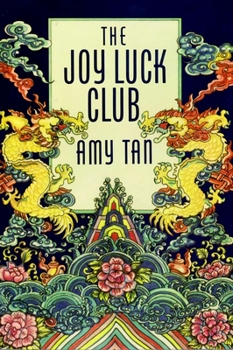 The Joy Luck Club by Amy Tan, 1989
The Joy Luck Club by Amy Tan, 1989
The Joy Luck Club explores the tender and tenacious bond between four daughters and their mothers. The daughters know one side of their mothers, but they don’t know about their earlier never-spoken of lives in China. The mothers want love and obedience from their daughters, but they don’t know the gifts that the daughters keep to themselves. Heartwarming and bittersweet, this is a novel for mother, daughters, and those that love them.
Read Along: The Last Story of Mina Lee by Nancy Joojoun Kim
Margot Lee’s mother isn’t returning her calls. It’s a mystery to twenty-six-year-old Margot, until she visits her childhood apartment in Koreatown and finds her mother dead under suspicious circumstances. The discovery sends Margot digging through the past, unraveling the facts of Mina’s life as a Korean War orphan and undocumented immigrant, only to realize how little she truly knew about her mother.
Bestselling Fiction in the U.S. 1975-1989
Ragtime by E.L. Doctorow
Trinity by Leon Uris
The Thorn Birds by Colleen McCullough
War and Remembrance by Herman Wouk
Sophie’s Choice by William Styron
The Covennant by James A. Michener
The Hotel New Hampshire by John Irving
Space by James A. Michener
Pet Sematary by Stephen King
The Talisman by Stephen King and Peter Straub
The Mammoth Hunters by Jean Auel
It by Stephen King
Kaleidoscope by Daniele Steel
The Cardinal of the Kremlin by Tom Clancy
Clear and Present Danger by Tom Clancy
Descriptions and overviews from The Gale Literature Resource Center, NoveList Plus, and publisher content.
